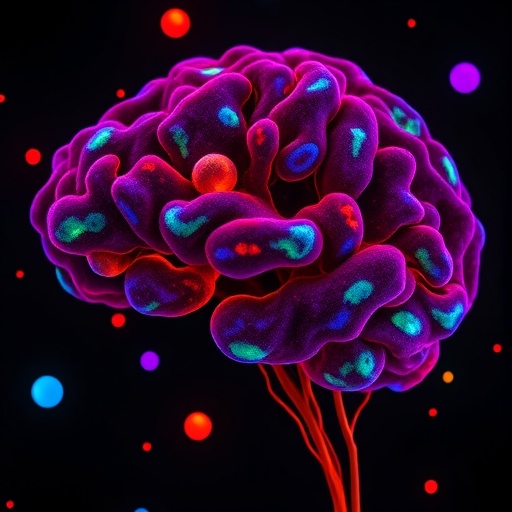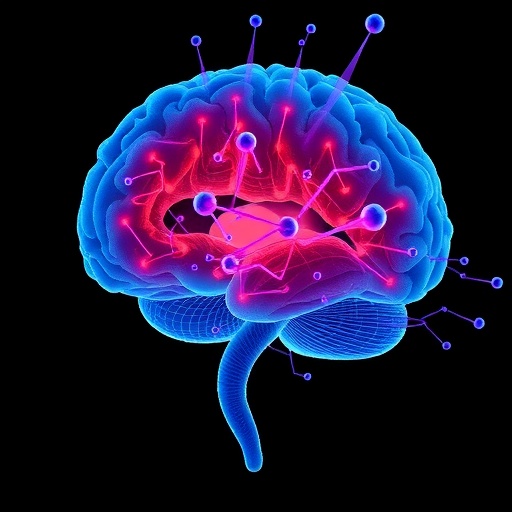In a groundbreaking study poised to reshape our understanding of neurodegenerative diseases and aging, researchers have unveiled a comprehensive atlas detailing circadian gene expression in glial cells. This unprecedented work exposes the intricate molecular choreography that occurs in the brain’s supporting cells as they respond to amyloid pathology and the natural aging process, shedding light on potential new avenues for therapeutic intervention.
Central to this study was the focus on glial cells—critical yet often underappreciated constituents of the nervous system. Unlike neurons, which handle the rapid transmission of electrical signals, glial cells provide structural scaffolding, immune defense, and metabolic support. Their role in maintaining brain homeostasis is crucial, and disturbances in their function have been increasingly implicated in neurodegenerative conditions such as Alzheimer’s disease. What remained unclear until now was how these cells’ gene expression aligns with circadian rhythms and how this daily regulatory mechanism is altered in pathological states.
The researchers employed cutting-edge gene expression profiling techniques to map the circadian oscillations of various glial cell types. Through temporal sampling across multiple points in the day-night cycle, they constructed an atlas capturing the dynamic flux of gene activity inherent to microglia, astrocytes, and oligodendrocytes. This approach allowed an unprecedented resolution in understanding the cell-type-specific temporal regulation of gene networks that underpin critical biological processes.
Intriguingly, the atlas revealed that each glial subtype possesses a distinct circadian signature, challenging prior assumptions that circadian regulation in the brain was primarily neuron-centric. Astrocytes displayed rhythmic expression patterns aligned with metabolic regulation and neurotransmitter recycling. Oligodendrocytes, responsible for myelination, showed time-of-day-specific gene expression related to membrane synthesis and repair. Microglia, the brain’s resident immune cells, exhibited rhythmic expression in genes linked to inflammatory signaling and phagocytosis.
Most striking was the discovery of cell-type-specific reprogramming of circadian gene expression in the context of amyloid pathology, a hallmark feature of Alzheimer’s disease. The pathological presence of amyloid-beta peptides disrupted the normal rhythmicity in glial cells, leading to aberrant gene expression profiles that may exacerbate neuroinflammation and impair neuroprotective functions. This disruption was not uniform across cell types but presented unique reprogramming signatures in each glial subset, indicating a complex and nuanced response to neurodegenerative stress.
Equally significant were findings related to aging, independent of amyloid pathology. The aging brain exhibited altered circadian gene expression in glia, with diminished amplitude and phase shifts in critical genes governing cellular metabolism, oxidative stress responses, and protein homeostasis. Such age-related circadian dysregulation potentially primes glial cells for maladaptive responses, contributing to neuronal vulnerability and cognitive decline characteristic of senescence.
Methodologically, the study integrated single-cell RNA sequencing with advanced computational models to disentangle overlapping gene expression signals within heterogeneous glial populations. This high-resolution data mining enabled an atlas that not only maps circadian dynamics but also differentiates between normal physiological states, amyloid-induced pathology, and aging effects with remarkable specificity.
These findings usher in a new paradigm proposing that glial cells are not passive intermediaries but active participants whose circadian clocks orchestrate brain health and disease. Disruption of these molecular rhythms in glia emerges as a potential early driver in the pathology of Alzheimer’s and other neurodegenerative diseases, offering novel biomarker candidates and therapeutic targets.
Furthermore, the rhythmic nature of drug targets within glial cells suggests that chronotherapy—timing treatment administration to coincide with optimal circadian phases—may improve efficacy and reduce side effects for interventions in neurodegenerative disorders. This insight opens exciting translational prospects, warranting further clinical investigation.
The atlas also raises profound questions regarding the interplay between systemic circadian cues, such as light-dark cycles and feeding behavior, and the cell-autonomous clocks within glial subsets. Disentangling these interactions promises to enhance our understanding of how lifestyle factors modulate brain aging and disease risk through glial biology.
Experts in the field have lauded this study for its meticulous approach and comprehensive scope. By charting the temporal dimension of glial gene expression with such precision, the research fills a critical knowledge gap and sets the stage for future explorations into circadian therapeutics and neuroprotection.
This work not only advances fundamental neuroscience but also underscores the importance of considering cellular chronobiology in the quest to combat debilitating brain diseases. As the population ages globally, elucidating the molecular timelines that govern glial function stands to become a cornerstone of personalized medicine strategies targeting Alzheimer’s and related disorders.
In conclusion, the creation of a glial circadian gene expression atlas reveals a complex yet coherent picture of how temporal gene regulation influences brain health in aging and under pathological amyloid stress. It provides compelling evidence that reprogramming of glial clocks is both a consequence and contributor to neurodegenerative processes. Unlocking these temporal signatures opens new therapeutic horizons that harness the power of circadian biology to preserve cognitive function and stave off disease progression.
With these insights at hand, the neuroscience community is empowered to pursue innovative, time-sensitive interventions designed to restore rhythmic integrity within glial networks. This could revolutionize how neurodegeneration is approached, transforming once intractable disorders into manageable conditions through strategic manipulation of the brain’s intrinsic timekeepers.
As research builds on this foundation, the promise of aligning circadian biology with neurotherapeutics shines brighter than ever, offering hope for millions affected by Alzheimer’s and the ravages of aging. The atlas stands as a testament to the extraordinary complexity—and exquisite order—within our brains, governed by the ticking of glial clocks beneath the rhythms of life itself.
Subject of Research: Glial circadian gene expression dynamics and their alteration in amyloid pathology and aging.
Article Title: A glial circadian gene expression atlas reveals cell-type and disease-specific reprogramming in response to amyloid pathology or aging.
Article References:
Sheehan, P.W., Fass, S.B., Sapkota, D. et al. A glial circadian gene expression atlas reveals cell-type and disease-specific reprogramming in response to amyloid pathology or aging. Nat Neurosci (2025). https://doi.org/10.1038/s41593-025-02067-1
Image Credits: AI Generated
Tags: aging and circadian gene expressionamyloid pathology and brain functionbrain homeostasis and glial functioncircadian rhythms in glial cellsgene expression profiling techniquesglial cell gene expressionglial cells in neurobiologymicroglia and astrocyte rolesmolecular mechanisms of neurodegenerationneurodegenerative diseases and agingstructural support in the nervous systemtherapeutic interventions for Alzheimer’s disease





